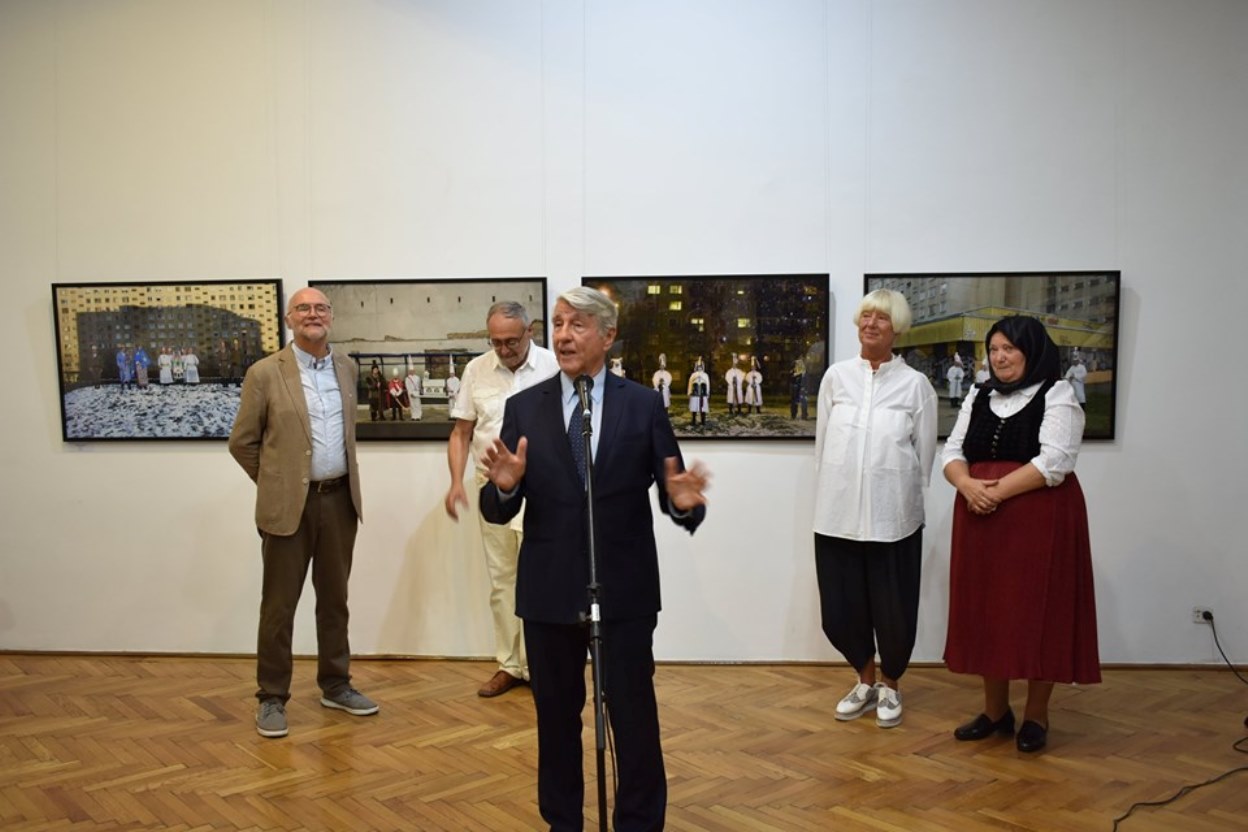Within the framework of the 10. Kolozsvár Hungarian Days – only two blocks away from the artist’s birthplace – a photo exhibition of Péter Korniss entitled “Changes” opened in the Bánffy Palace, home of the Art Museum of Kolozsvár/Cluj-Napoca. The exhibition – covering five decades of his photography – can be visited until September 12.
Photographs of the exhibition -chosen by curator Krisztina Jerger- were taken between 1967-2017 and by looking at them we are faced with the inevitable changing processes of the passing time.

Besides the large number of guests, numerous models of Korniss from Szék/Sic, and many of his friends were also present at the opening. For example there was his old friend Ferenc Novák dance choreographer, who first invited Korniss to Szék, to take some photos in the traditional dance house of the Hungarian village in 1967. And there was also Michel van Langeveld, the Dutchman who fell in love the Hungarian dance house movement so much as a result of the Korniss’ photography that later he even moved to Transylvania leaving his whole life behind in the Netherlands. (You can read our interview with Michel HERE.)
The exhibition was opened by composer György Selmeczi, who called the photographer one of the few masters who truly understand the times we live in.
“No contemporary Hungarian thought exists without him.”
– said Selmeczi, whose opinion is that Korniss can grab the accelerating time in his pictures. According to him, looking deeply at these photographs the story can always be seen: both the story of the photographer and the story of his models, which are also “our own stories” at the same time. The audience could also listen a brass band playing the music Selmeczi composed specially for this occasion.
“The photographer is vulnerable to reality”
– and the result is affected by so many external factors stated Péter Korniss in his speech, and continued: “In my case these external factors were always the people. The people, who trusted me and stood front of my camera. Believe me, if somebody stands front of the camera, that person exposes him/herself, and I am really grateful for all of those, who have done that.”
Péter Korniss was born in Kolozsvár in 1937 and was only twelve when he moved to Budapest with his family where he’s been living ever since. Following the Hungarian Revolution of 1956 he was expelled from university due to political reasons –where he was studying law- and so he started to work as unskilled laborer instead at the Budapest Photo Cooperative. This is how he got into contact with photography, and later he spent 50 years recording the disappearing traditional peasant life and culture in Transylvania and other parts of the Carpathian basin. (More details about his life HERE.)
The exhibition is open until 12. September from Wednesday to Sunday between 10:00-17:00.
Title image: At the Western Railway Station (2015) by Péter Korniss. – The women from Szék, who was one of the young girls dancing in the dance house of Szék five decades ago is now selling hand made traditional cloths in Budapest.